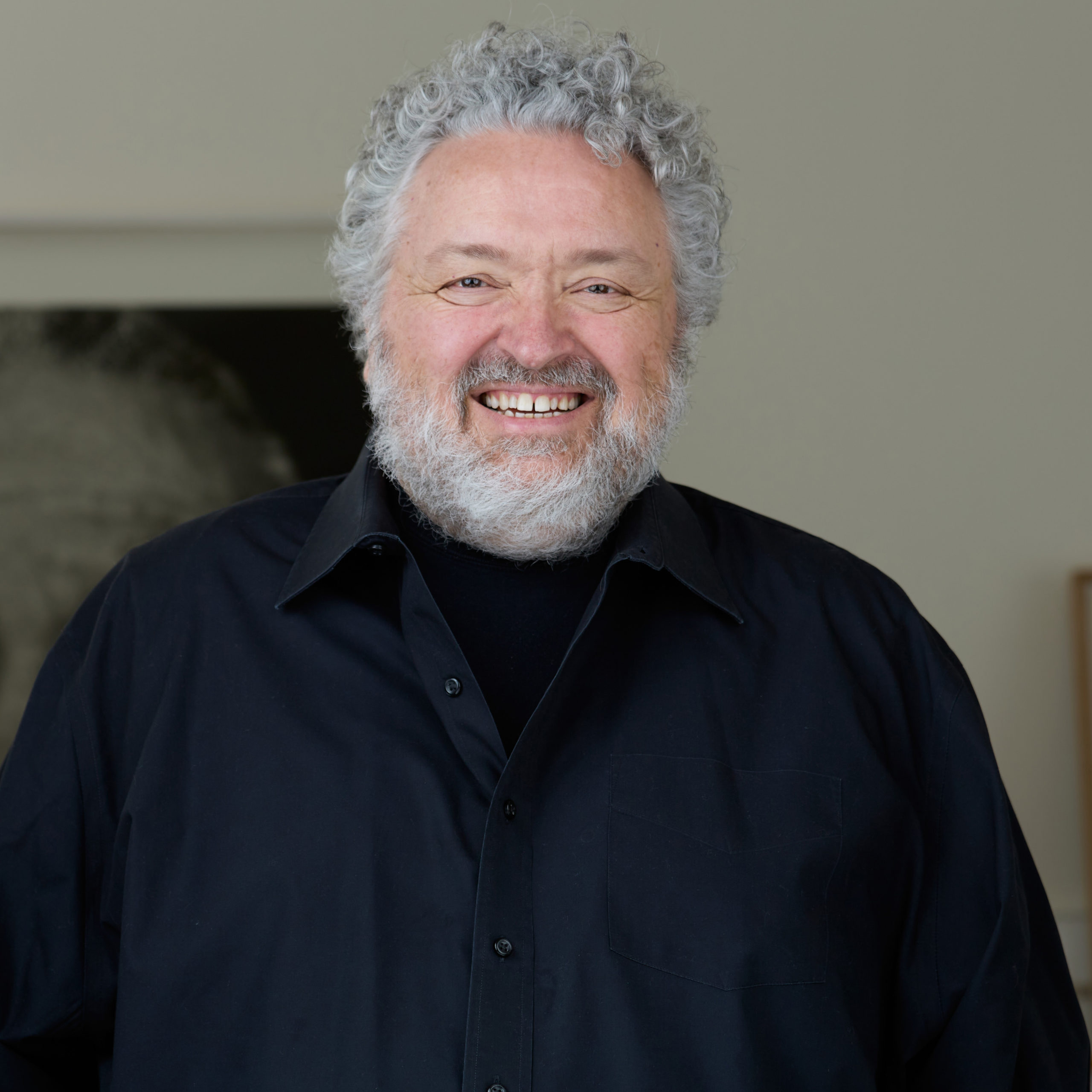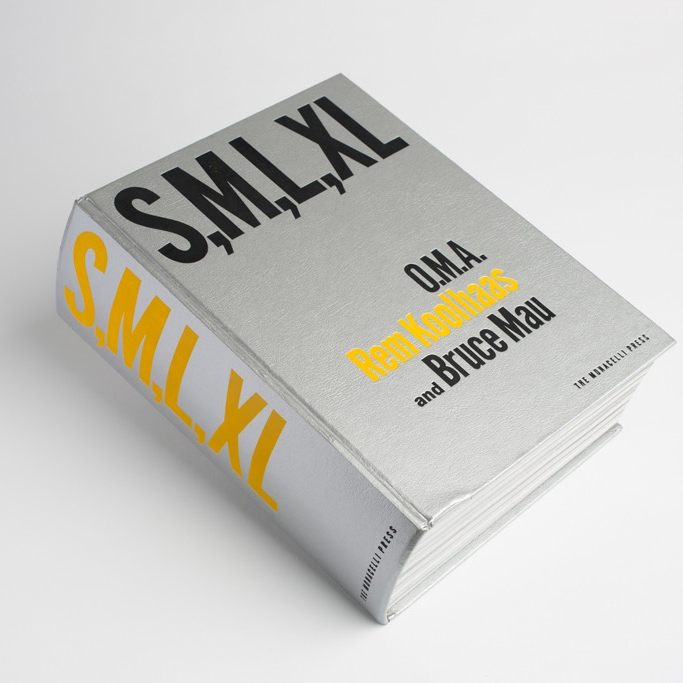

Bruce Mau was born in 1959 in Pembroke, Ontario, and grew up on a farm in a remote area outside the mining town of Sudbury in northern Ontario. His father was a miner. When Bruce was 12, his mother left, taking Bruce and his four sisters and supported the family with three jobs.
The family’s house was built on a rocky hill on the edge of the forest. During the long harsh winters, there was no running water in the house. Bruce’s job was to go down the hill to the well in the valley and collect the family’s daily water supply. For most of his life, Bruce thought that his life on the farm had no relevance to his life as a designer. But over time, Bruce recognized that his childhood experiences gave him firsthand knowledge about what it takes to obtain fresh water, an experience he shares with about a billion people, along with a sense of empathy that remains at the heart of his life’s work to solve problems in our world.
Bruce attended Sudbury Secondary School, and in his final year, when he couldn’t get into art school, chose to stay an extra year and work with his high school art teacher, Jack Smith, who mentored his artistic and academic pursuits. Bruce’s first trip away from home was by bus during the night for his college interview in Toronto. Inspired by the city and its vibrant culture, Bruce went on to attend Ontario College of Art (now OCAD University), where he studied advertising under Terry Isles and discovered his lifelong passion for “the intersection of words and images.”
Bruce left college before graduation to join Fifty Fingers, a Toronto design group. Yearning to experience life beyond Toronto, Bruce landed a position with Pentagram in London. But after two years, Bruce realized he wasn’t working on what he loved – he wanted to work on “improving the world.” At the age of 22, Bruce returned to Toronto and co-founded Public Good Design and Communications with a simple intention: “do things that make the world a better place.”
The next year, Bruce began a forty-year collaboration with Sanford Kwinter and designed Zone Books’ groundbreaking inaugural double issue, “Zone 1|2: The Contemporary City,” a multi-perspective embodiment of the contemporary city. The impact of his design on the actual content of the books was acknowledged by the editors, who included Bruce as an author on the spine of the inaugural volume.
The opportunity to design for Zone Books led to major milestones in Bruce’s career – and in his life. While Bruce retained the role of design director for Zone Books for two decades, he established his own studio, Bruce Mau Design, in Toronto. It was in his early studio days that Bruce met the love of his life, Aiyemobisi “Bisi” Williams, who became his wife, mother of their three daughters, co-collaborator and business partner.
While leading his design studio, Bruce’s work soon raised his global profile as a designer, author, innovator and educator in collaboration with the world’s leading brands, organizations, governments, universities, renowned architects, entrepreneurs and fellow optimists.
For five years, Bruce collaborated with Rem Koolhaas to conceive the landmark architecture book, “S,M,L,XL,” on the remarkable visionary work produced by the Dutch firm OMA and its acclaimed founder. It was a new kind of narrative in architecture – Bruce wanted people to experience the reality of architectural life, “what it means to dig a hole in the ground and change the world.”
At the age of 39, Bruce self-published “The Incomplete Manifesto for Growth” – his offering, incomplete, of a way of thinking about how to sustain a creative life. His 43-point statement that he describes as having a “gentle spirit” delivered a universal calling that spread throughout the world, with translations into dozens of languages, serving as a beacon for creatives.
In 2003, Bruce was commissioned by George Brown College in Toronto to design the Institute without Boundaries (IwB) as a collaborative pedagogy that produces entrepreneurial designers capable of constant learning. The first project of the IwB was the groundbreaking Massive Change exhibition. Fifteen IwB students spent a full year working with Bruce in his Toronto studio and became co-authors of the project, including the exhibition, a student product line, website, radio show and the book, “Massive Change,” published by Phaidon. IwB inspired other institutions in North America, including an ambitious and forward-looking Arizona State University, eager to invite Bruce to help them remake the accepted model of the American university and build one driven by purpose, committed to serving the public good, invested in community, innovation, collaboration and social impact.
Fueled by his optimism, Bruce and his team worked with executives at The Coca-Cola Company to develop “Live Positively,” a sustainability platform and a new brand icon, the company’s first in a long while. An image of a positive future sparked inspiration and activations within the brand culture and resonated with consumers as well as new partners, including American chair manufacturer Emeco to design strategy, exhibits, branding and graphics for a version of Emeco’s legendary 111 Navy Chair made of 111 recycled Coke plastic bottles.
From learning institutions and global brands to cities and cultural movements, Bruce’s work to improve the world continued to evolve. In collaboration with Northwestern University Transportation Center and Antonio DiMambro & Associates, Bruce developed a 1,000-year vision for the urban development and sustainable transportation for Makkah in Saudi Arabia that he and his team communicated through film, models, books, and graphics for an exhibition mounted in Jeddah. In addition, after almost four decades of civil war when peace was new to much of Guatemala, the country’s minister of education asked Bruce to join a group of Guatemalans looking to design a better future. His approach was to demonstrate that this process was already in progress, with many Guatemalans actively working to build their country’s future. Together they created the ¡GuateAmala! (The Love of Guate) Movement, enabling activists to come together, see one another and help each other advance their purpose.
It became apparent to Bruce and Bisi that there was urgency in all of his work that brought ambitious challenges, which excited the couple to do more work to improve the world. As a result, in 2010, Bruce stepped away from his Toronto design studio to co-found Massive Change Network with Bisi in Chicago, dedicated to transformative application of design through the very principles that guided his career all along.
To create value and positive impact across global ecosystems and economies, Bruce evolved a unique toolkit of 24 Massive Change design principles — MC24 — that can be applied in any field or environment at every scale. The MC24 principles underpin all of Bruce’s work — from designing carpets to cities, books to new media, global brands to cultural institutions, and social movements to business transformation — and became the subject of his book, “MAU: MC24, Bruce Mau’s 24 Principles for Designing Massive Change in Your Life and Work.”
Global events leader Freeman retained Bruce to inspire innovative thinking, improve quality of work, reduce costs and enhance the experience of every Freeman customer and employee through design. From 2015 to 2020, Bruce served as chief design officer and continues to consult as an innovator in residence.
Books remain central to Bruce’s purpose of achieving and inspiring understanding, clarity and alignment around visions of a better future. He has contributed to the development and design of more than 200 books for the Art Gallery of Ontario, Claes Oldenburg, Douglas Gordon, Frank Gehry, Gagosian Gallery, and Getty Research Institute, James Lahey and Mark Francis among others. Bruce is also co-author of several books, including “THE NEXUS: Augmented Thinking for a Complex World – The New Convergence of Art, Technology, and Science,” with Julio M. Ottino, dean of Northwestern University’s McCormick School of Engineering; “The Third Teacher” with OWP/P Architects and VS Furniture; and “Spectacle” and “Drama” with David Rockwell.
Bruce serves as a visiting professor at academic institutions across North America, including the McEwen School of Architecture at Laurentian University in his hometown of Sudbury, Pratt Institute and is Distinguished Fellow at the Segal Design Institute, McCormick School of Engineering at Northwestern University. A former William and Stephanie Sick Distinguished Professor at the School of The Art Institute of Chicago (SAIC), Bruce holds an honorary doctorate from SAIC, an honorary doctorate from Laurentian University in Sudbury, and an honorary diploma from his alma mater, OCAD University, among other honorary degrees.
When it comes to his achievements, Bruce is most grateful to be an Honorary Royal Designer for Industry (RDI), a distinguished appointment for top non-UK designers by the Royal Society of Arts in London, which he credits for “triggering” the process to codify his methodology into the MC24 design principles. He counts his Design Mind National Design Award from Cooper Hewitt Smithsonian Design Museum as his “most touching honor” because it acknowledges a body of intelligence created beyond the individual work – and came as a complete surprise thanks to his studio’s nomination on his behalf.
Bruce’s work and life story are the subject of the feature-length documentary, “MAU,” which premiered at SXSW in 2021. Available on TVOD in North America, the film’s theatrical releases in Bruce’s hometown of Sudbury, Toronto, New York, Los Angeles and Chicago brought design into the cultural spotlight. Across nearly forty years of design practice, Bruce has, in the words of architect Bjarke Ingels, “expanded the notion of what design is and expanded the potential scale of impact.” In these times of complex, interrelated challenges that are unlike any we’ve faced before, Bruce believes life-centered design offers a clear path towards identifying the full context of our problems and developing innovative, sustainable and holistic solutions. While Bruce’s greatest happiness comes from his family, he remains dedicated to do as much work as he can to improve the world.